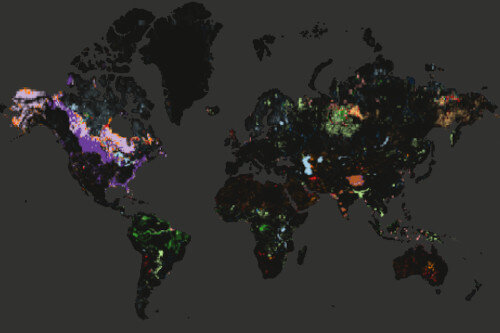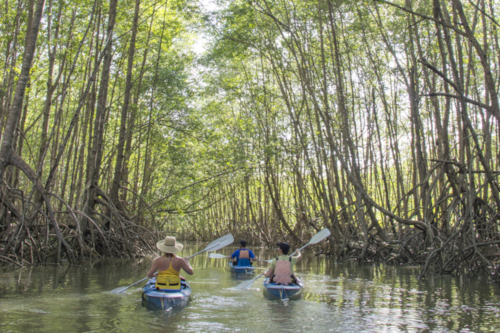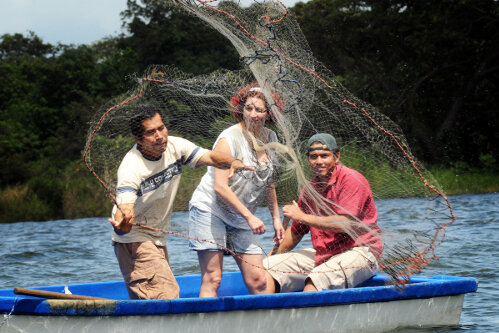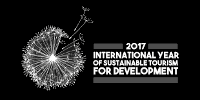Wetlands & Sustainable Tourism
/Updated. First Published 2 February, 2021
Wetlands are beautiful areas and a vital part of the natural world – but wetlands are being destroyed, threatening the lives of the animals, plants and people that depend on their health.
2 February each year is World Wetlands Day to raise global awareness about the vital role of wetlands for people and our planet. The day marks the date of the adoption of the Convention on Wetlands on 2 February 1971, in the Iranian city of Ramsar.
Wetlands: Did you know…?
• Wetlands cover about 7% of the earth's surface: 10 million square kilometres (Global Lakes and Wetlands Database).
• Yet wetlands store a disproportionate amount of soil carbon: 20% and 30% of the estimated total 1,500 Pg (petagrams) of global soil carbon (Nature).
• 40% of all species rely on freshwater wetlands.
• Wetlands are disproportionally important to species e.g. wetlands make up only 3% of the UK but are home to around 10% of its species.
• Peat wetlands store more carbon in the soil than rainforests: a third of the world’s total; Mangroves store four times as much carbon as rainforests.
• More than half the world relies on wetland-grown produce for their staple diet.
• Wetlands help to clean drinking water, removing up to 60% of metals in water and up to 90% of sediment and nitrogen.
• At least 50% of the world's wetlands have been destroyed in the last 100 years, threatening human and species welfare at a time of increasing water scarcity.
(source WWT)
What are Wetlands?
From famous giant deltas such as the Okavango in Botswana, mighty estuaries and mudflats to floodplains, peatlands, mangroves or bogs and marshy land, a wetland is an important distinct ecosystem. They are low lying areas where the watertable is always at or near the surface.
Under the Ramsar international wetland conservation treaty,
• "...wetlands are areas of marsh, fen, peatland or water, whether natural or artificial, permanent or temporary, with water that is static or flowing, fresh, brackish or salt, including areas of marine water the depth of which at low tide does not exceed six metres." (Article 1.1)
• "[Wetlands] may incorporate riparian and coastal zones adjacent to the wetlands, and islands or bodies of marine water deeper than six metres at low tide lying within the wetlands." (Article 2.1)
Wetlands vary considerably in size from a few hectares to several hundreds of square kilometres and differ in soils, topography, climate, hydrology, water chemistry, vegetation and other factors, including human disturbance such as farming or infrastructure like dams.
Wetlands are part of our natural infrastructure. They help regulate the water cycle and control floods by acting as a giant sponge and soaking up excess water, plus slow down water flow, giving flood waters more time to recede. They recharge groundwater, potentially reducing water shortages during dry spells. (informaction.org)
As the first line of defence against flooding they provide stabilization of shorelines as well as essential environmental functions such as water storage, filtration and purification, prevention of drought and pollution, and processing of carbon and other nutrients.
As such, wetlands are also considered the most biologically diverse of all ecosystems, ‘biological supermarkets’ serving as home to and supporting a wide range of plant and animal life – aquatic, reptiles, birds and mammals - dependent on the wetlands’ unique characteristics, lands and waters near it.
Wetlands form a link between the land and the water resources which humans rely on.
“If rainforests are the lungs of the planet, then wetlands are the lifeblood. As much as we need air to breathe, we need water to live. The conservation of our wetlands is essential to all life on Earth” – Wildfowl & Wetlands Trust.
Where are the World’s Wetlands?
Around 50 percent of wetlands worldwide are estimated to have disappeared since 1900: In the first half of the 20th century, mostly in northern temperate zones; since the 1950’s, in tropical areas. Loss of wetlands has been higher in parts of Europe, Canada, Australia and Asia, and the southern half of the US lost over 50% of its wetlands in a 50 year period.
The Global Lakes and Wetlands Database (GLWD), developed by the World Wildlife Fund and the University of Kassel, shows the location and type of 10 million square kilometres of wetlands, about 7 percent of the earth’s surface.
The map also includes large lakes (bigger than 50 square kilometres) and man-made reservoirs, which cover about 2 percent of the earth’s surface. Nine wetland types are characterised.
About 30% of the world’s wetlands are located in North America, and another 30% in Asia, though global distribution of wetlands data was published in 2004, and may not reflect current areas.
Mapping these wetlands critical ecosystems that store freshwater and carbon is essential to understanding how choices we make about infrastructure and development will affect the future (Resource Watch).
The Importance of Wetlands to Biodiversity
Numerous species of birds and mammals rely on wetlands for food, water, shelter and rest, especially while migrating and breeding: they are important spawning, nursery and feeding grounds for many reptile and fish species, including those commercially fished, such as shellfish.
During times of drought, many species rely on wetlands for hydration and refuge.
Wetland plants are also used in medicine: More than 80% of the world’s population relies on traditional medicines from plants and animals.
The Importance of Wetlands to Food
Submerged species provide a food source for fauna, habitat for invertebrates, and also possess filtration capabilities, such as seagrasses, algae and plankton.
This supports the development of organisms that form the base of the food web eg. insects, molluscs, crustaceans, attracting further animal species and producing great quantities of food, as well as species such as oyster filtering the water while grazing.
Fish species need wetlands like mangroves for critical hatchery and nurseries and the coral reef system for food.
Wetlands naturally produce an array of vegetation and other ecological products that can be harvested for personal and commercial use. The most significant is fish - the main source of protein for one billion people, 15% of an additional two billion people's diets, plus 80% of the income and employment to residents in developing countries, another is rice - one fifth of the total global calorie count. Palms are also converted to sweeteners and carbohydrates, honey collected from mangroves (Wikipedia) and plants like blueberries, cranberries and mints are produced in wetlands (US Environmental Protection Agency) as well as other natural products such as timber.
Wetlands can produce far more food and habitat if they are managed in a natural way.
What’s Threatening Wetlands?
Unsustainable Development: Large areas of wetlands have been converted or degraded or destroyed by drainage, land clearing, farming practices, mining, pollution, hunting, as well as urban and industrial development. Construction of dams and weirs to mitigate flooding can isolate wetlands from their nourishing river systems, causing them to dry and disappear, destroying wildlife habitat.
The swampy Sundarbans is the world’s largest mangrove forest from the eastern edge of India to southwestern Bangladesh. Home to more than 13 million people, the population is pushing right up against the border of the mangroves. With sea level rise, flooding could drive the ecosystem to extinction in 50 years. (SDG 11)
Climate Change: Many coastal wetlands depend on fresh water, but sea water is inundating these habitats, some which cannot thrive in the saltier water, due to sea level rise. Increased air temperatures and atmospheric carbon dioxide concentration, increased frequency and severity of weather patterns, droughts and floods can affect and wetland functions and ecosystem balance. (SDG 13)
Water pollution: Through contamination by chemicals – whether garden or agriculture fertilisers and pesticides, drainage of pollutants and toxic materials, or accidental spills from factories. Some, such as sewage, can actually cause nutrient enrichment but lead to algal blooms which may be toxic to wetlands life. (SDG 6)
Loss of Vegetation: An important component helping maintain a healthy wetland ecosystem through water balance, habitat and food for fauna, protection against salinity and erosion, plus providing natural beauty. Many species including human depend on these for survival. (SDG 15)
Invasive Non-Native Species (INNS): Whether weeds which create competition for resources with native plant species, or feral animals (such as carp, grasses, donkeys and goats), which can spread disease or have a destructive impact on environments, alien species can disrupt the intricate food chains that exist within the ecosystem. (SDG 15)
Destruction of Peatlands: Made up of partially decomposed, wet plant material formed over thousands of years, peatlands are carbon sinks and the most carbon-rich soil in the world, removing carbon from the atmosphere and storing it. (SDG 13, SDG 15)
But as a fertile land becomes scarce, it’s become a target for agricultural expansion (such as for palm oil in Asia, in particular Indonesia and Malaysia the world’s two largest sources of tropical peat). This requires peat to be drained, releasing CO2, an overlooked source of emissions with no accountability, so infrequently counted (Global Forest Watch, 2016).
The Ramsar Convention on Wetlands of International Importance Especially as Waterfowl Habitat
As a result of public awareness and protests, governments recognised the importance of wetlands for humans and the wildlife that depends on them for survival.
In 1971 the International Convention on Wetlands treaty was signed in Ramsar, Iran by 152 different parties, with 1610 wetland sites totalling 145.2 million hectares listed as wetlands of international significance.
The Convention aims at stopping the worldwide loss of wetlands and conserving remaining wetlands through wise use and management to prevent loss of biodiversity or the many ecological, hydrological, cultural or social values of wetlands.
This requires policy making, capacity building, information sharing and international cooperation to conserve and recognise valuable wetland ecosystems.
What have Wetlands got to do with Tourism?
Home to a wide range of species where water and dry land meet, wetlands are fantastic places to connect with nature, and have intrinsic natural beauty for aesthetic appreciation.
They also provide opportunities for tourism and recreational activities such as boating, swimming, fishing, bushwalking and bird watching, found to contribute billions of dollars to economies.
'Recreational hunting and fishing’ is the most widespread tourism activity (43% of Ramsar Sites), while ‘water-sport activities’ are the least widespread (6% of Ramsar Sites).
Europe, Oceania and North America have similar tourism activity profiles, with ‘recreational hunting and fishing’ and ‘picnics, outings and touring’ being the most important activities.
In the United States, more than half of all the adults (98 million) fish, birdwatch or photograph wildlife (or sadly hunt), annually spending a total of $59.5 billion in the process (US Environmental Protection Agency).
In Africa ‘recreational hunting and fishing’ is by far the most prevalent activity, and in Asia ‘nature observation and nature-based tourism’ is the most important type of tourism in wetlands.
In Latin America and the Caribbean, ‘recreational hunting and fishing’, ‘nature observation and nature-based tourism’, ‘picnics, outings and touring’ are roughly equivalent in importance (Ramsar.org).
The Ramsar Convention is committed to supportpromoting sustainable tourism, strengthened by Resolution VII.8, supporting governments to safeguard the cultural values of wetlands, the livelihoods they provide, and the rights of indigenous peoples and local communities to participate in their management.
Some wetlands such as in Australia, benefit certain communities as they are of cultural significance, providing an additional spiritual value to wetlands. For Australia’s first people, the land and sea and all that connects them are the source of identity, spirituality, culture, economy and wellbeing. Indigenous Australians at least jointly manage 11 of the 65 Australian wetlands designated as internationally important under the Ramsar Convention. (Environment.gov.au)
How can you Help Support Wetlands?
You can help conserve wetlands by visiting and supporting tourism organisations that support wetlands.
Those that protect wetlands, such as restricting abstraction (the removal of water and removing chemicals that could contaminate, as well as projects to restore and naturalise water courses, help build nature-based solutions to climate change, locking up more carbon, supporting wildlife, and providing vital benefits like flood prevention.
They will reduce chemicals - fertilizers, herbicides and pesticides - applied to gardens and buy peat-free products for gardens, including not buying any plants grown in peat.
In the Osa Peninsula, kayak through the mangroves and view the ecosystem at work and the biodiversity there up close.
On Floreana Island in the Galapagos, Flamingo Lagoon at Punta Cormorant is a small, salt-water lagoon where flamingos can be seen, usually at sunrise, wading through the shallow waters. As they make their way across the brackish water they sift through the mud for shrimps. Species of ducks, flycatchers, finch and many other birds can also be seen here. You might even spot a sea lion en route too!
Join the artisan fishermen on Lake Nicaragua at Jicaro Lodge.
Constructed Wetlands
A constructed wetland (CW) is an artificial wetland created to emulate functions of natural wetlands’ vegetation, soil, and organisms in filtering sediments and heavy metal pollutants to treating municipal or industrial wastewater, greywater or stormwater runoff. Some constructed wetlands may also serve as a habitat for native and migratory wildlife, although not intended as their main purpose.
Tiger Mountain Pokhara Lodge in Nepal, a hive of nature activity for birds and butterflies, are installing constructed wetland (CW) reed-bed natural filtration plants.
Links between Wetlands & The SDGs:
SDG 6 Water & Sanitation: Protecting wetlands can reducing flood damage and preserving water quality.
SDG 3 Health and Well-Being: This protects our health and safety, along with spending time in nature improves for mental as well as physical well-being.
SDG 13 Climate Change: Protecting carbon-rich wetlands such as peatlands is one of the most effective ways to avoid carbon emissions to help mitigate global warming and the climate crisis.



















